Plan the Perfect Bar: Layout Examples and Floor Plans
Great bars start with great layouts. Discover the essential zones every bar needs and get inspired by floor plan examples.

Whether you are creating a cozy neighborhood bar, a lively sports bar, or a specialized wine bar, one part of the process is creating a floor plan for the space.
A bar floor plan helps you visualize how all the parts (the entrance, bar area, seating, etc.) will flow together.
The floor plan can be 2D to show the layout or 3D to showcase the materials and colors. You want to create an enjoyable spot for your customers that is also efficient for your employees and profitable for you.
💡Codes and Regulations
It’s important to note that many cities require you to submit a floor plan as part of a bar’s permit process. Thus, while you can create a floor plan to brainstorm and narrow down ideas, consider hiring a professional who knows the ins and outs of local building codes and regulations to fine-tune and advise you on the final design.
Types of Bars
One of the first steps is deciding what type of venue you want to create, as this will significantly impact the required space and the bar floor plan layout. Are you dreaming of a:
Neighborhood bar
Want a space where locals meet for a round of drinks? Your venue may be cozy, with a bar area, tables, and simple snacks such as chips or nuts that require little food preparation.
Thus, a smaller footprint in the 1,000 to 1,500 sq ft (about 100 m2 to 150 m2) range may be perfect.
Specialty bar
Such as a wine bar, cocktail bar, or whiskey bar. This bar typically has a compact footprint and may feature specialized equipment tailored to the type of alcohol you plan to serve.
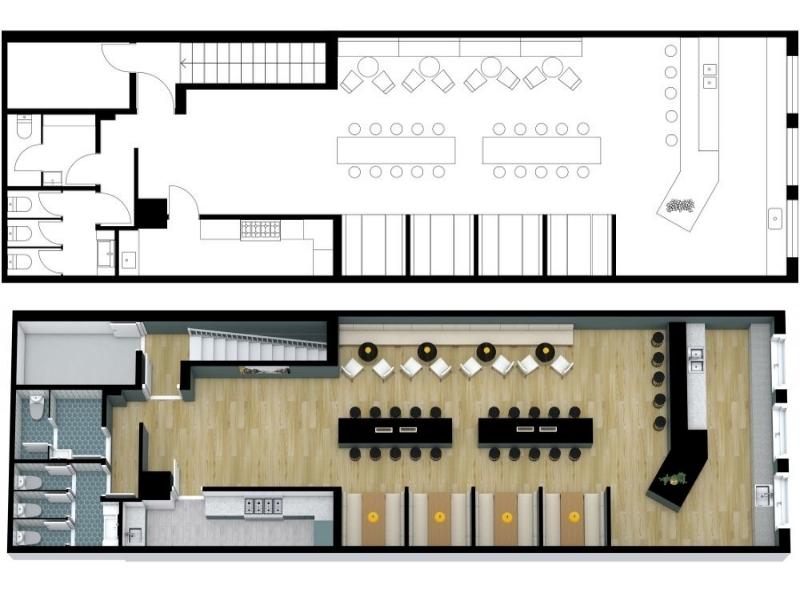
Brewpub
A brewpub focuses on beer on tap, bottled beer, snacks, and possibly full meals. In this case, beer storage and a kitchen may be part of your planning.
Sports bar
Sports bars often have widescreen TVs, sports activities like pool or darts, and additional food options. Sports bars tend to have a larger footprint, possibly in the 2,000 sq ft (about 200 m2) range.
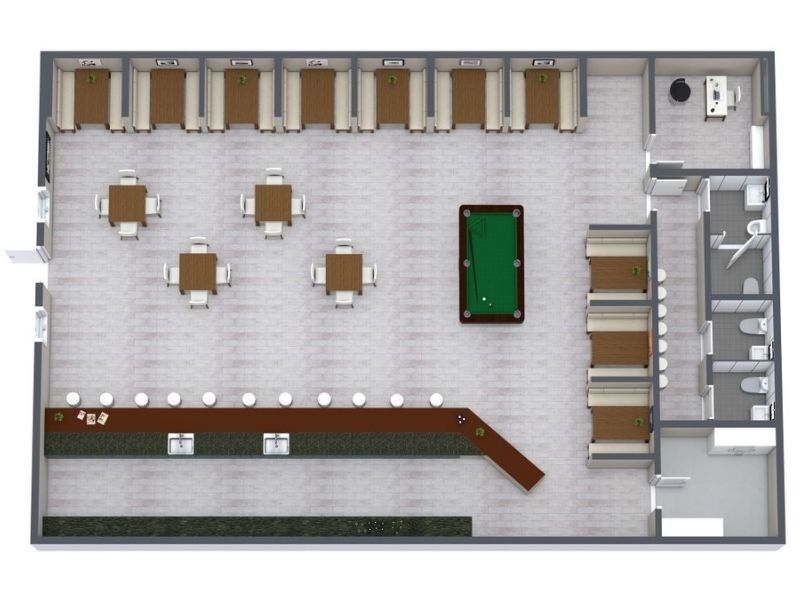
Bar and nightclub
With a bar area and a stage or dance floor, the entertainment area could range from a small corner for a single guitarist to a large stage and dance floor.
Nightclubs typically have the largest footprint, ranging from 2,500 to 5,000 sq ft (approximately 250 to 500 m²).
Standard Sections or Zones
No matter which type of venue you are creating, every bar has some standard “front of house” sections, which are the areas that the customer experiences, and “back of house” sections, which are behind the scene.
Typical “front of house” sections:
The entrance
The entrance gives your guests the first impression of your bar, so be sure it reflects your theme and has an easy flow into the rest of your establishment.
Bar area
Since your goal is to create a successful bar, this is essential to plan well. A good bar layout appeals to your customers and creates efficiency for the bartenders, helping them avoid extra steps and putting needed items within easy reach.
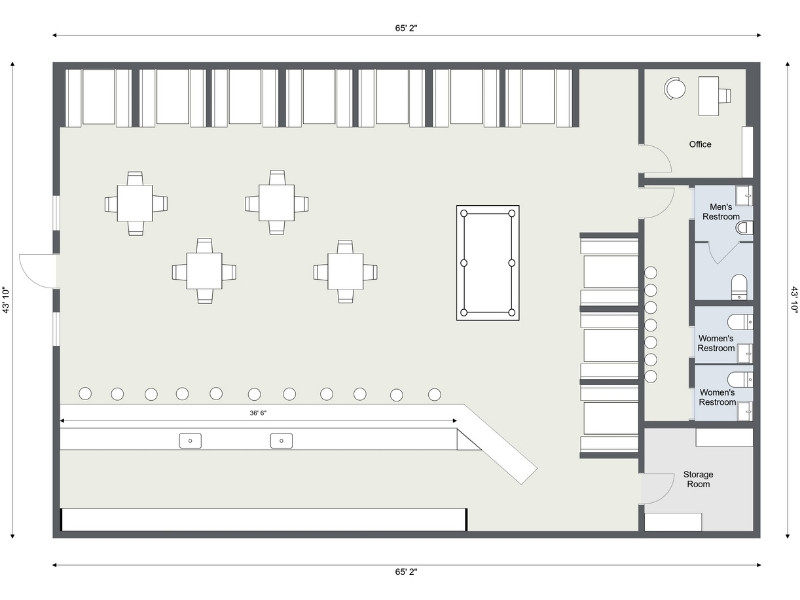
Seating areas
The type of bar you are creating will help you determine the style and kind of seating to provide - such as booths, tables, and bar stools. Ideally, provide a mix so that there’s an option for everyone.
Outdoor seating
If you are in a locale with a pleasant climate, outdoor seating is popular. So add an outdoor area to your bar floor plan and make sure this area is as enjoyable as your interior areas, with shade from the daytime sun and heat lamps and lighting for the evenings.
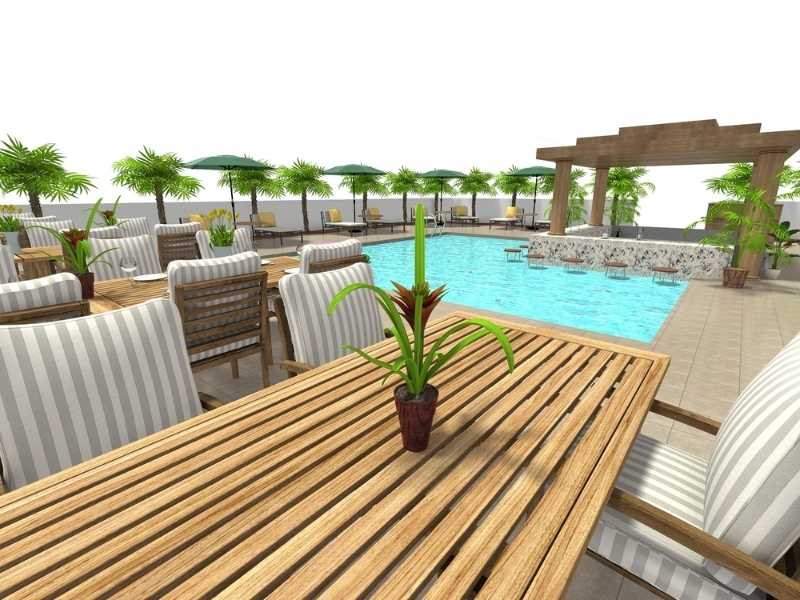
Restrooms
Your restrooms can significantly impact your customer’s experience, so don’t overlook them in the floor plan. Ideally, situate these rooms a little away from the main room but close enough that they are easy to find and access.
Entertainment areas
Equipment could include pool tables, ping pong, darts, a stage, or a dance floor. If you plan for live performances, make sure there is space and electricity for sound and lighting equipment.
Exits
Multiple clearly marked exit doors should be part of any bar layout.
Typical “back of house” sections:
Payment or point of sale (POS) stations
You’ll likely set up one or more POS stations near the bar and the seating areas. Or, you might use handheld POS devices that your servers and bartenders can take to your guests to save everyone time.
Kitchen and prep
While a bar kitchen is usually smaller than a restaurant kitchen, ensure adequate space for food prep, cooking, and plating if you plan to serve more than simple bar snacks.
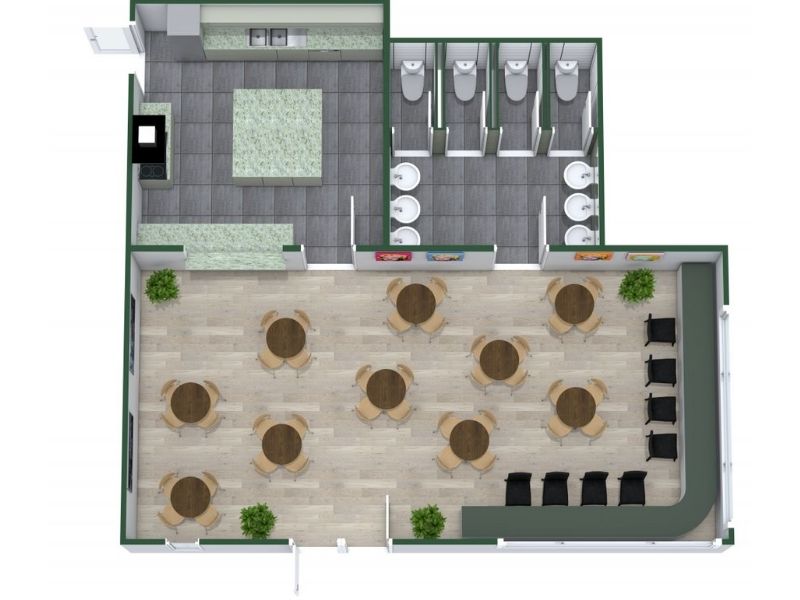
Refrigeration and storage
Depending on your type of bar, this could include specialty wine refrigerators, food refrigerators, freezers, and storage areas for food and cooking supplies.
Dishwashing and garbage
Cooking supplies, plates, utensils, and cups must be washed and dried. You’ll also likely need trash storage inside any kitchen area and one or more bins behind the bar.
Offices and break rooms
In larger bars, your design may include an office or work area for management and possibly a break area for staff.
Bar Layout Tips
The actual bar where your customers order drinks is likely the heart of your establishment. So make sure you spend a good part of your planning to create a beautiful and efficient drink serving space. Here are a few tips:
Bar size and shape
Commercial bars are often L-shaped, U-shaped, or straight. A bar top is usually 20-30 inches deep (about .5-.75 m) and 42-45 inches high (about 1.1-1.2 m).
As far as width, this depends on your venue size, your estimated volume of drinks, and how many bartenders you’ll have working at one time.
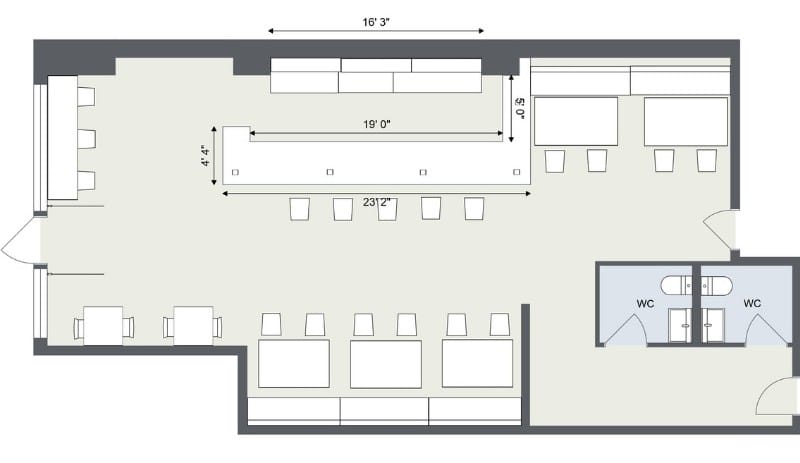
Aisle space
A standard recommendation is to provide 3 feet (about 1 m) of open aisle space behind the bar. If you are planning a busy venue with multiple bartenders and barbacks, be sure the aisle will be adequate for easy passing.
Standard bar equipment
If you aren’t an experienced bartender, getting expert feedback before designing the bar area is a good idea.
There’s a lot to creating an efficient space that allows your bartenders to access all their needed supplies quickly.
You’ll probably need one or more ice bins, places to store alcohol and mixers, garnish stations, glassware, speed rails (mini-shelves to hold your most common bottles), waste bins, and cleaning supplies.
Know Your Building Codes
You may be required to submit a floor plan as part of your local city’s bar permit process.
So it’s essential to research the health, building, and sanitation codes related to your design or work with someone experienced in this area.
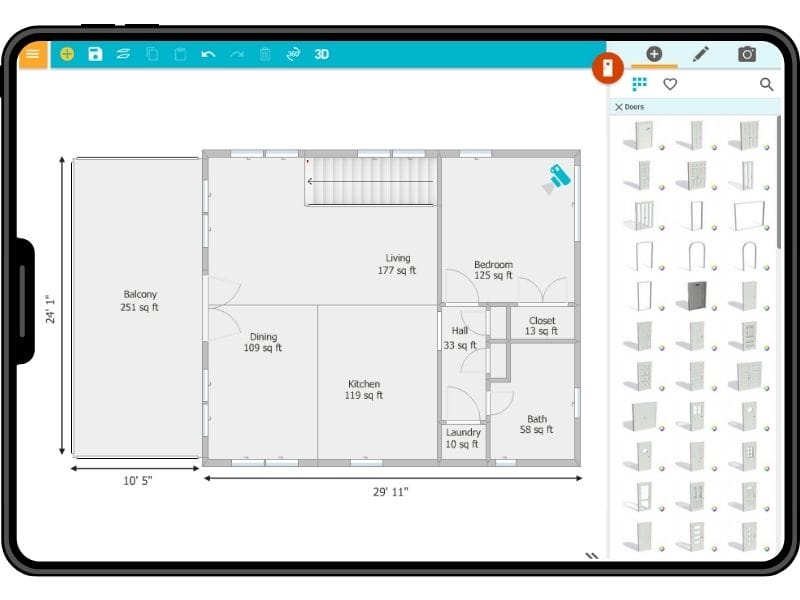
Plan Your Bar with RoomSketcher
All the floor plans and images in this article were created using the RoomSketcher app. With RoomSketcher, you can:
- Draw floor plans for bars of any size or style
- Add furniture, bar counters, lighting, and décor
- Visualize your design in 3D with just one click
- Export professional 2D and 3D Floor Plans
- Save time with customizable templates and quick editing tools
Related Articles

Plan Your Restaurant Layout for a Great Guest Experience
Your restaurant floor plan does more than show tables and walls. It sets the stage for your guests’ experience and your team’s workflow. Here’s how to plan a layout that looks great and works smoothly.
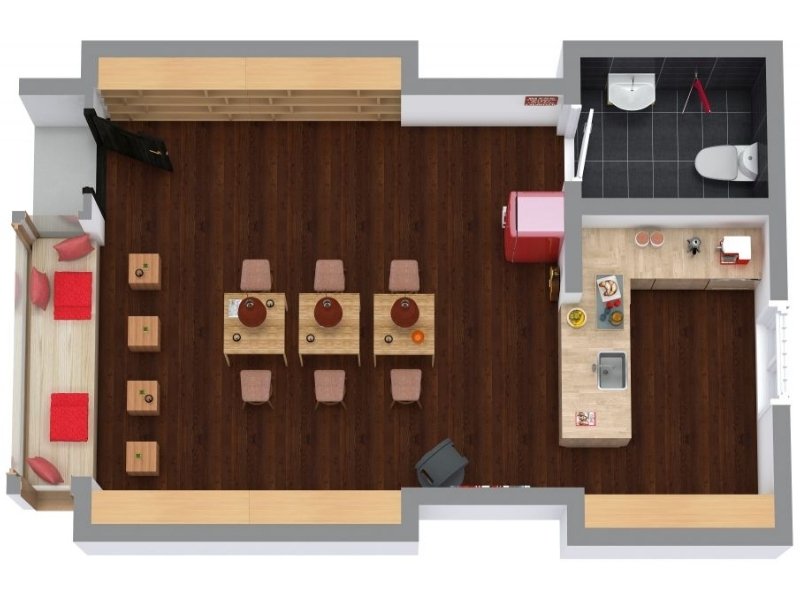
How to Plan a Coffee Shop Layout
The layout of a coffee shop can make or break the customer experience. A well-planned floor plan makes it easy for guests to order, find a seat, and enjoy their coffee in comfort, while also helping your staff work efficiently.

9 Best Commercial Floor Plan Software Tools
The best way to attract interest, test out different layouts, and communicate design intent is with floor plan software. But which one should you choose? We've made a list of the best options for you.
